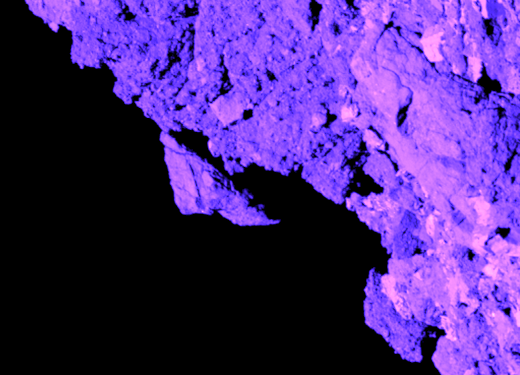
Dr Masi told Express.co.uk: "I was able to image this asteroid again, via the Virtual Telescope Project facility in Cecanno, Italy.
* * *
And though the asteroid appears as nothing more than a blurry dot of light in the video, astronomers estimate it measures somewhere in the range of 1.11 miles and 2.54 miles (1.8km and 4.1km) across.
Dr Masi photographed the asteroid when it was approximately 7.45 million miles (12 million km) from Earth.
Quite a lot has been going on:
Tickling the Asteroid's Tail - Scientific American Blog Network

Around seven in the evening on a calm September day in 2016 an Atlas V rocket growled its way into space from Cape Canaveral. On board was NASA's OSIRIS-Rex mission to study the carbonaceous asteroid known as "Bennu" and to bring back some 60 grams of material for study on Earth.
Some four years later, having arrived at Bennu in December 2018, the mission is now in a lengthy preparation period for that oh-so-precious grab at a tiny piece of this rubbly, seventy-million ton repository of pristine material from the earliest days of our forming solar system. A critical part of that preparation is making sure the spacecraft can be safely maneuvered down to the asteroid's surface, to a predetermined sampling zone, and be safely maneuvered away again.
Video Captures Asteroid Hitting Earth And Forming Bright Fireball [WATCH]

A security camera was able to capture the moment when a meteor streaked across the sky and created a bright fireball. The incident was most likely caused by a small asteroid that collided with Earth.
The latest fireball incident was monitored by the American Meteor Society (AMS). According to the organization, the fireball event happened during the early morning of April 17. It was spotted from portions of Texas and Arkansas.
According to eyewitness reports gathered by the AMS, the meteor only appeared for a brief period of time. The eyewitnesses stated in their reports that the fireball only appeared in the sky for about 1.5 seconds before it disappeared.
UArizona Cameras Capture Asteroid Close-Up During OSIRIS-REx Rehearsal | UANews

The OSIRIS-REx Camera Suite, or OCAMS, was developed at the University of Arizona. The OCAMS team is led by instrument scientist Bashar Rizk , deputy instrument scientist Christian d'Aubigny and instrument manager Chuck Fellows . Through OCAMS, the spacecraft "saw" asteroid Bennu as it first approached it. OCAMS also provided global image mapping of Bennus surface and more detailed images of the selected and candidate sample sites.
A carefully choreographed dance on April 14 brought the spacecraft of the University of Arizona-led OSIRIS-REx asteroid sample return mission within just over 200 feet of the surface of the asteroid Bennu – closer than ever before.
Not to change the topic here:
Lunar Gateway to launch asteroid-deflecting spacecraft

Earth's battle against asteroids — just in case we get thrown into some sort of Deep Impact scenario — isn't just going to be fought on this planet.
"'Use of the Lunar Orbital Platform-Gateway as home base for FastResponse Planetary Defence Missions' has been funded by ESA," Politcecnico di Milano notes on its website . "The project aims to use the Lunar Orbital Platform-Gateway (LOP-G) as a launchpad for probes intended to intercept asteroids on a collision course with Earth."
OSIRIS-REx spacecraft carries out first of two rehearsals before sampling asteroid –
Operating with on-board autonomy more than 140 million miles from Earth, NASA’s OSIRIS-REx spacecraft succeeded Tuesday in a rehearsal for the sample return mission’s touch-and-go landing on an asteroid later this year.
Tuesday’s practice run lasted around four hours, and the OSIRIS-REx spacecraft moved as close as 213 feet (65 meters) from asteroid Bennu, closer than any point since the mission’s arrival at the asteroid in December 2018.
Saturn-like 'planet' may have been a giant dust cloud caused by asteroid collision | Daily Mail

The first planet to be discovered outside our solar system isn't a planet at all, and may be a giant dust cloud created by the collision of two icy asteroids, a study finds.
Twelve years ago, astronomers spotted what they thought was a Saturn-like planet in the Fomalhaut star system 25 light years from Earth, and called it Fomalhaut b.
But now researchers from the University of Arizona claim the visible and infrared images of the 'planet' captured by the Hubble Space Telescope were actually of a cosmic collision.
Nasa: 'potentially hazardous' asteroid will skim Earth this week | Metro News

These so-called 'near-Earth objects' (NEOs) need to pass within a certain threshold to be considered 'potentially hazardous'.
And the experts at the US space agency say there is one such rock on the radar for this week. The asteroid 2012 XA133 is set to pass Earth on Thursday, March 26 at a speed of 53,000mph.
The asteroid measures approximately 1,280 feet (390m) wide, which is enough to cause a major impact on Earth if it collided with the planet. Thankfully, Nasa engineers calculate the trajectory of the asteroid will take it safely past us.
Happening on Twitter
#MoonCrushMonday: Using data from our Lunar Reconnaissance Orbiter, scientists found that over time, the Moon and E… https://t.co/2kjX2B5h94 NASAGoddard (from Greenbelt, MD USA) Mon Apr 20 18:43:49 +0000 2020
This week: 👩🚀 🌏 Crewmembers return safely to Earth from @Space_Station 🛰️ ⛏️ Our @OSIRISREx spacecraft practices… https://t.co/7sO3jffOCo NASA Sat Apr 18 01:16:01 +0000 2020
NASA's Unprecedented Closeup of Asteroid Bennu @OSIRISREx captured this series of images Tuesday during the 10-min… https://t.co/gNkUAkrfMX NASAGoddard (from Greenbelt, MD USA) Thu Apr 16 17:13:08 +0000 2020
Later this year, the @OSIRISREx mission will collect a sample from asteroid Bennu. After collection, the spacecraft… https://t.co/Usz3pP4RTv NASASolarSystem (from Milky Way galaxy) Tue Apr 14 17:32:28 +0000 2020
No comments:
Post a Comment